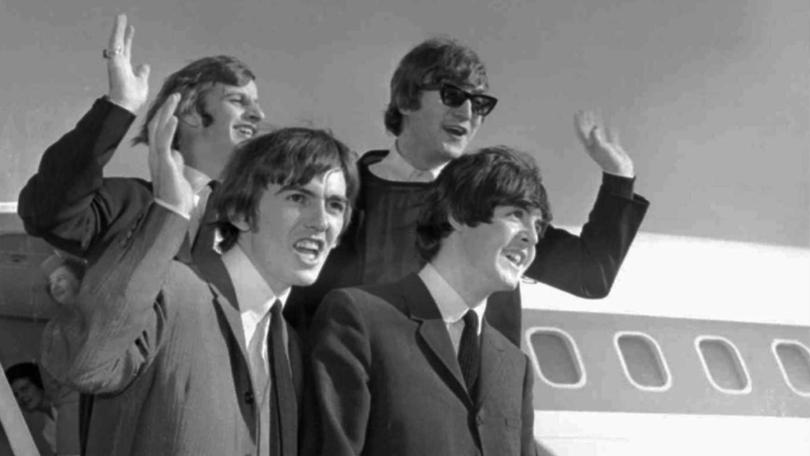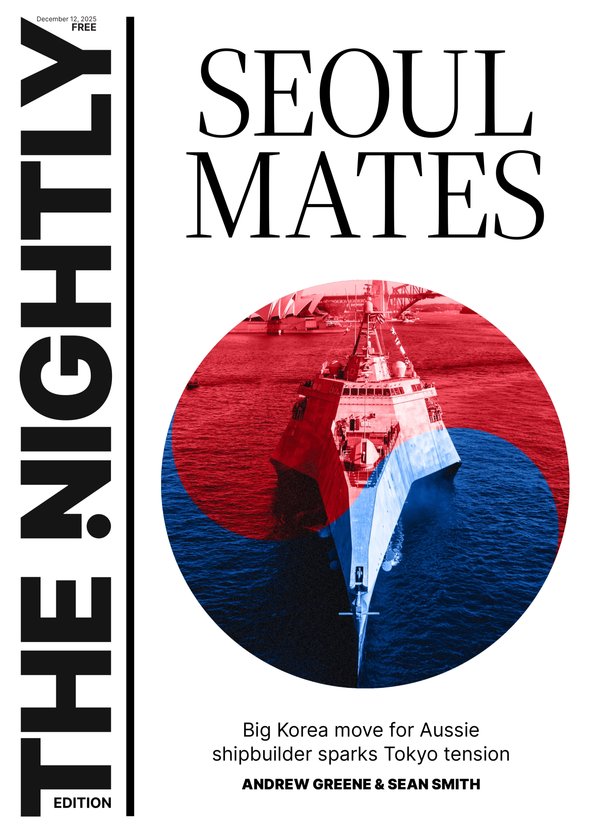How the Beatles won Australia over minus the razzmatazz

Teenager Sandi Keane had bought herself a mini skirt and a pair of Baba boots, and had her hair cut into a Beatles fringe. She was in her dad’s Holden, on the way to catch her first glance of the Fab Four at Melbourne’s Southern Cross Hotel.
The Beatles were on the Down Under leg of their 1964 world tour. Beatlemania was in full swing and Australian crowds - unused to big international acts making it all the way to the Antipodes - didn’t disappoint.
It’s estimated hundreds of thousands of screaming fans lined the streets from Essendon Airport to the city centre that day, with some 15,000 waiting for them at their hotel.
Sign up to The Nightly's newsletters.
Get the first look at the digital newspaper, curated daily stories and breaking headlines delivered to your inbox.
By continuing you agree to our Terms and Privacy Policy.Even the Queen didn’t generate such numbers during her tour the previous year.
At a press conference, the group said they loved the madding throng - though drummer Ringo Starr quipped he was a little worried when forced to lie on the floor of a car to get into the hotel.
“My God, you know, there were thousands of people there, mostly teenagers, and we were all yelling and screaming ... we were engulfed by Beatlemania,” Ms Keane remembers 60 years later from her home in Kew.
“And then they came out on the first floor balcony and talked to all of us and waved and so on.
“I could hardly hear what they were saying, there were police and girls were screaming. It was really exciting.”
The crowds were so large, the Keanes had to park some distance off but Sandi’s 45-year-old dad wasn’t going to miss the opportunity for them to meet their idols.
“He loved the Beatles. He was an amateur musician himself,” she says.
“He didn’t come to the concert but insisted on taking us to the Southern Cross Hotel.”
Attending one of three Festival Hall concerts a couple of days later, Ms Keane was surrounded by similarly adoring super fans.
“They were just so different to everybody else. It was the 60s and boy, were we ready for change,” she says.
Like the rest of the world, Australia was going through a monumental cultural and social revolution. Somehow, the Beatles had come to represent that new generation.
“They were a massive part of that cultural shift,” Ms Keane says.
“They started that whole rock band thing. People copied them and they took it from there. It was refreshing. Though they look quite mild now by comparison.”
The concert was a blur of screaming teens and while Ms Keane can’t remember all the songs played, she does recall well the feeling in the room.
“The song I remember that they played that I really loved was She Loves You. Oh, absolute classic,” she says.
“And because I was pretty shy at that stage and the words meant something to me.
“It was incredibly noisy ... but you could hear some of it. And because you knew the song, you were kind of singing along.
“It was just the most joyous occasion ... We’d never seen anything like this before.”
To mark the tour’s diamond anniversary, it’s being celebrated as one of the defining moments of Beatlemania.
A definitive collection of stories and images compiled in a new book, When We Was Fab: Inside the Beatles Australasian Tour 1964 by Australian broadcaster and historian Greg Armstrong and UK-based music writer Andy Neill, is out on June 1.
The pared back, simple show of “four boys in four plain suits and ties” would pale in comparison to big acts these days, like Taylor Swift’s recent Eras tour, with its dancers, lighting and stage effects, Ms Keane says.
“It was just their voices, just their instruments, just them,” she says, remembering favourite Paul McCartney’s “honey on toast-type voice” and John Lennon’s untrained “very raspy” tones combining in perfect harmony.
“Honestly, the music was just amazing. No one else sounds like them, you know?”
While raucous, the crowds didn’t overstep, which is fortunate as there was very little security.
“One guy went up and shook John Lennon’s hand but there weren’t crowds rushing the stage.
“While their might have been yelling and screaming, we were all on our best behaviour.”
McCartney played the part of the “really nice kid next door ... that every mum would be proud of”, Lennon was “terribly funny”, Starr was shy and George Harrison “didn’t do very much”.
“They were a really decent bunch of guys who, in spite of all the stardom and the fame and the money that was coming in, remained themselves,” Ms Keane says.
“I’m sure if you’d gone up and spoken to them or went out for the night with them, they’d have been just the way they were.”
The four young men - only a few years older than Sandi and her friends - captured their audience, completely living up to the hype that surrounded them.
“They came onto an empty stage. It was just them in their suits and ties and their instruments. And that’s it,” Ms Keane says.
“You didn’t get any of the other razzmatazz with it that you get these days, you know? The mad lighting and acoustics and fireworks and all.
“And that’s what’s so special and that’s why people still love the Beatles and love their music.”
